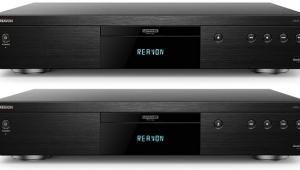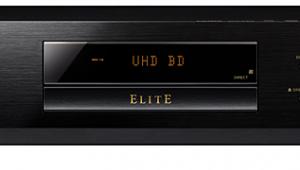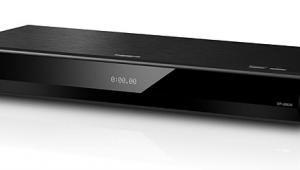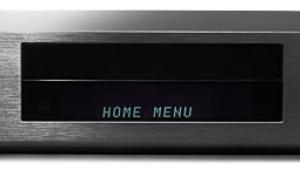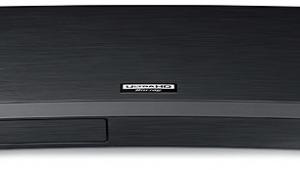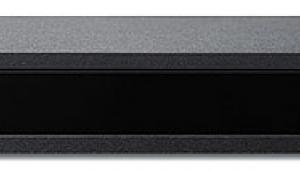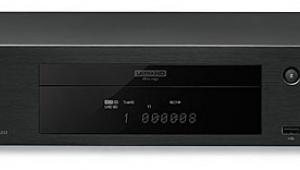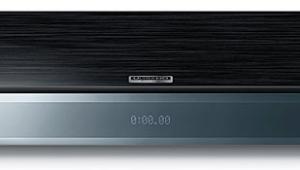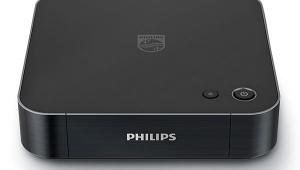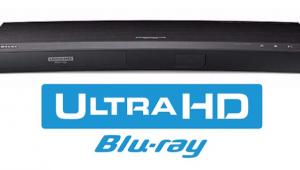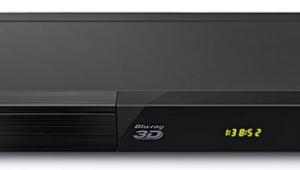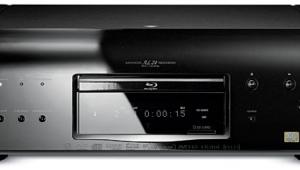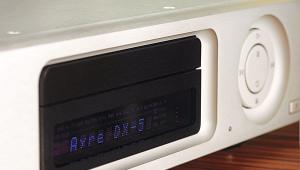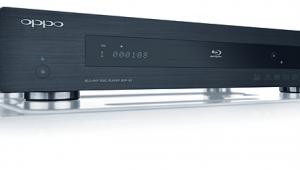Samsung UBD-K8500 Ultra HD Blu-ray Player Review Apples To Oranges: 1080p vs. HDR UHD
A precise comparison between an HDR UHD movie and its 1080p Blu-ray release was impossible without an identical second display (and even then, that set’s 2K-to-4K upconversion would add another variable). Even so, I couldn’t resist comparing an HDR UHD Blu-ray, played on the Samsung player into the Samsung 4K set, with the equivalent 1080p Blu-ray using my Oppo BD-105D (with Darbee enhancements off) and my 1080p reference display, the Panasonic TC-65ZT60 plasma.
To match the two displays as closely as possible in subjective average brightness, I put the Panasonic’s Panel Brightness on High (normally it’s on Medium) and advanced its Contrast control several steps above optimum. I again chose to sit a bit further from the sets than theory suggests for a UHD source (but no further than most of you would find comfortable), this time to give the Panasonic’s 1080p a fight- ing chance.
Popping The Martian into both players, I was surprised at first to notice few if any differences. But soon the benefits of the HDR Ultra HD became evident. Shadow detail was similar on both setups, though slightly better on the Samsung (apart from a few starfield shots, which favored the Panasonic). The resolution was roughly identical on both setups, though when I did see a (subtle) dif- ference, it favored the HDR UHD. There was an occasional trace of white clipping on the Panasonic—not serious, but no surprise with the set being pushed so hard. But the biggest differences were in the bright white highlights, which stood out significantly more on the HDR version. Interestingly, some of those details bloomed a bit on the UHD setup, with softened edges, while remaining more sharp-edged, though less vivid, on the Panasonic.
I repeated the test with The Smurfs 2, a brighter, more colorful disc produced from a true 4K digital intermediate rather than an upconverted 2K DI. Bright highlights remained more impressive on the HDR UHD combo, particularly noticeable on the mirror lights in Gargamel’s dressing room. And resolution was better on the Samsung HDR setup; though small by degree, it did add to the result.
Thus a win, overall, for the Samsung UHD setup, with the latter’s HDR offering the most obvious benefits. Overall, the advantages of the Samsung combo resulted in a more palpable and immersive experience. Is the difference comparable to the step we saw when moving from 480i DVD to 1080p Blu-ray? No way. But it is important.
Of course, I’d never choose to drive the Panasonic constantly in the High Panel Brightness mode used here. And the downside for the LCD setup was its off-center performance. Whenever I moved beyond mid-screen by more than 10 degrees or so in any direction (including up or down), the advantages of HDR dropped off dramatically as the image faded in a way common to most LCD displays.—TJN
